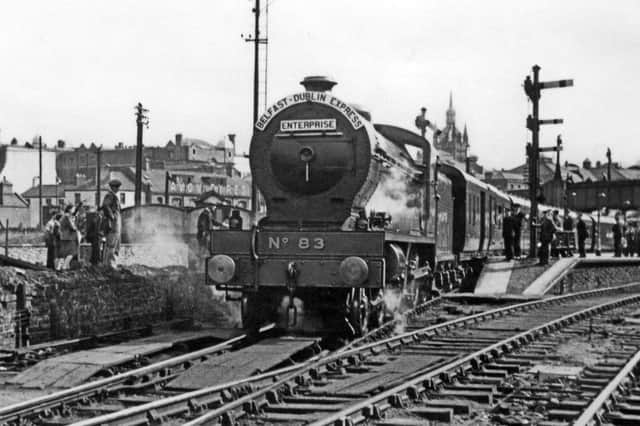Belfast-Dublin link celebrating 75 years


At 10.30am on August 11 1947, the first Belfast-Dublin train set out – a seven-carriage steam train operated by the Great Northern Railway (Ireland). The occasion is being marked with an exhibition of photographs of the train, its customers and staff through the years – on display at Dublin Connolly Station and Lanyon Place Station in Belfast.
A Translink spokesperson said: “Its first year in service consisted of one train in each direction with its launch heralding a new era in cross-border rail travel connecting the two cities. Today, 75 years later, Enterprise passenger demand is on course to reach an all-time high with 16 departures daily (eight in either direction).
Advertisement
Hide AdAdvertisement
Hide Ad“From an operational perspective, there have been many milestones over the decades like diesel railcars replacing steam locomotives, to major refurbishments and railway upgrades. But the Enterprise story has also been impacted by the wider historical context like the Troubles when the Peace Train Organisation was set-up and the ‘contraceptive trains’ of the Irish Womens Liberation Movement.”
The spokesperson added: “Now jointly operated by Translink NI Railways and Iarnród Éireann, the Enterprise Strategic Development Plan outlines ambitions for the development of the service from procurement of new fleet and line electrification to journey time improvement options.”
Translink Group chief executive Chris Conway said: “Today we celebrate the service, our staff and customers over the decades. Whatever your reason for travel, Enterprise has been there to connect us to family, friends and opportunity, evolving with the times and better connecting Belfast and Dublin.”
His Iarnród Éireann counterpart, chief executive Jim Meade, said: “The Enterprise service has a rich and evocative history. I am certain that our customers will very much enjoy the exhibition that is now on display at Lanyon Place and Connolly.”